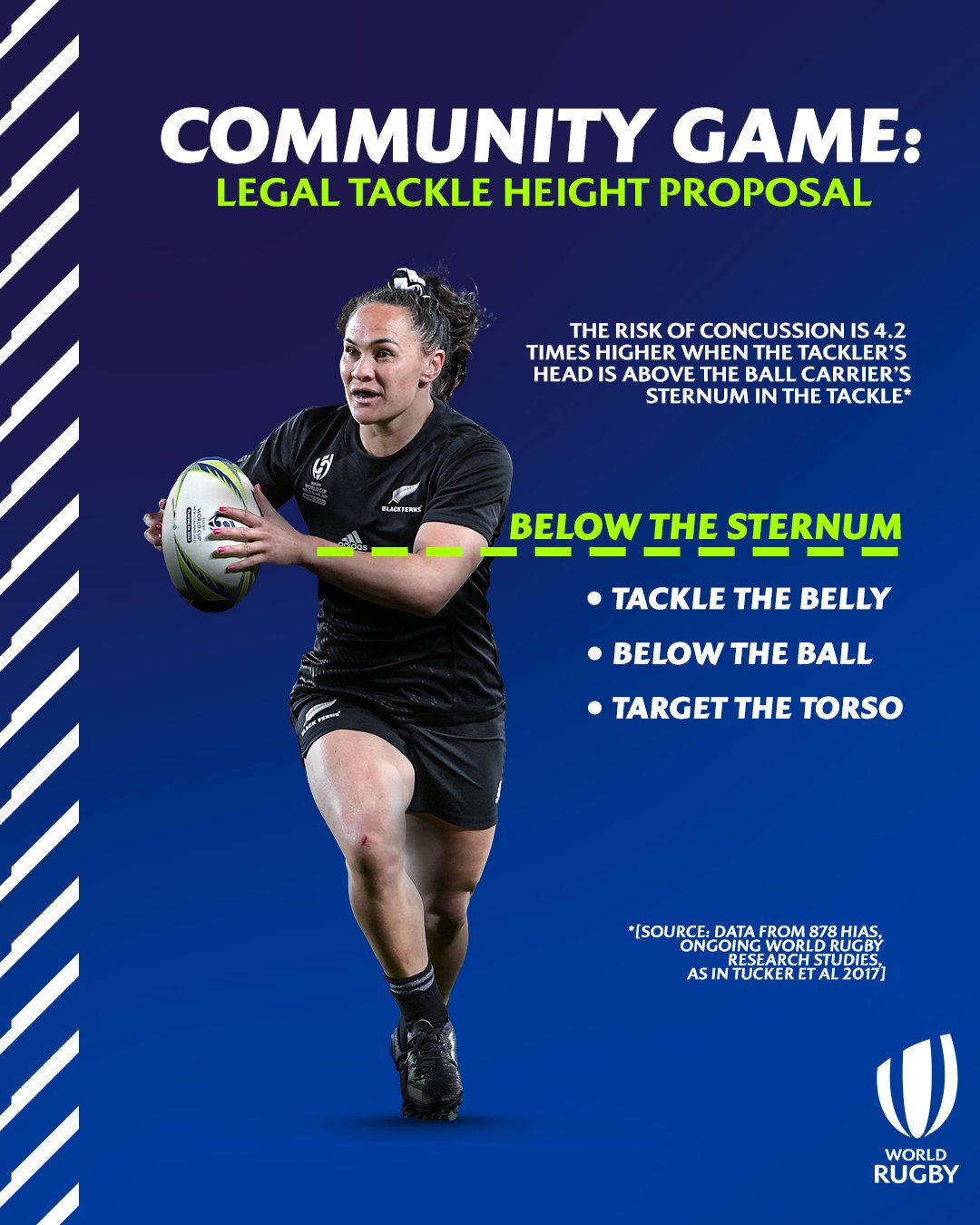Lower tackle height law trial introduction
In May 2023, World Rugby Council approved a recommendation that unions participate in trials of a lower tackle height in community rugby. The opt-in trial, which gives unions the freedom to adapt within their own jurisdiction, aims to improve player safety by reducing the risk of head-on-head contact and therefore concussions.
Council ratified the Executive Board’s recommendation from March, to follow the evidence and lower the permitted tackle height in the community game to below the base of the sternum - the area of the stomach, belly or below – statistically the safest place to make a tackle for both tackler and ball carrier.
To date, the following unions have opted into the trials: Australia, England, Ireland, Italy, Japan, Scotland, South Africa and Wales alongside France and New Zealand where similar trials were already taking place. Many more are undertaking consultation.
World Rugby endorsed trials in France and South Africa has shown that lowering the tackle height reduces the number of head-on-head contacts and concussions. Lowering the tackle height has also shown positive outcomes regarding increased ball-in-play time and offloading. The changes have also helped to increase player participation in France.
The new law trial will allow unions to:
- Set a legal tackle height at the base of the sternum, or below as best suits their community game
- Set secondary laws governing associated areas of the game such as pick and go, double tacklers and ball carriers dipping into contact.
As part of its own consultation process World Rugby held a Q&A session which can be watched back here.
The trials will be given significant time for players to adapt and for substantial, quality data to be gathered from around the world. The results of the trial will be formally reviewed in early 2025.
Following enquiries from members, World Rugby would support closed trials at the elite level should a union or competition wish to run such a trial.
